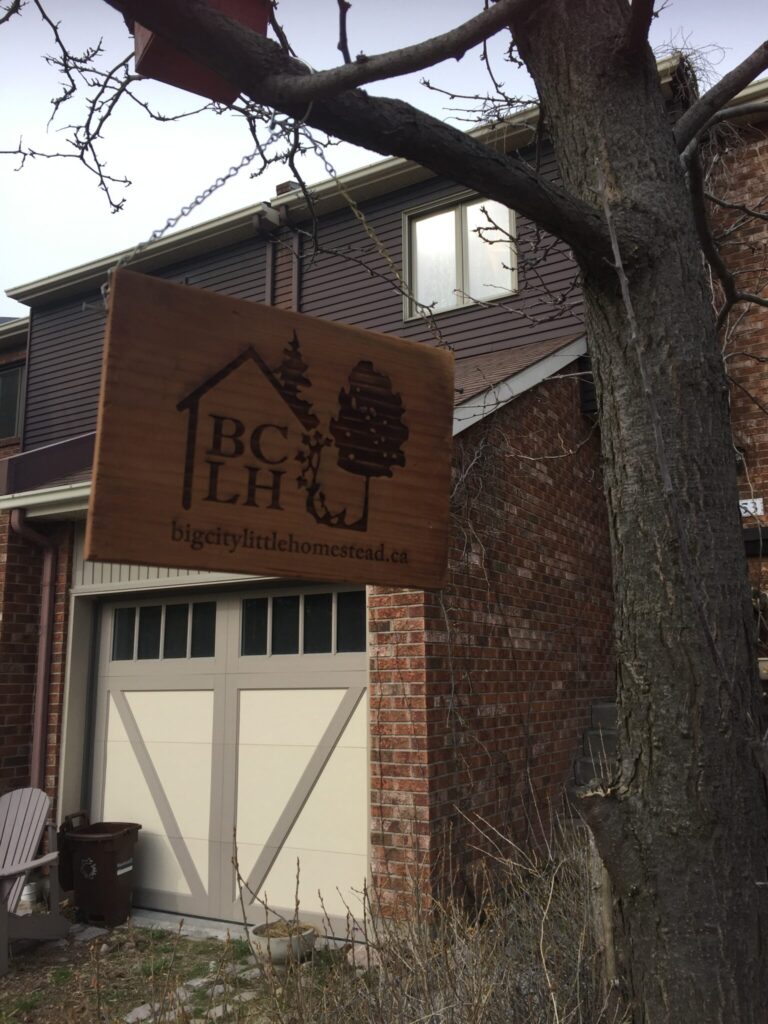If you’ve been to this blog at least once before, you’ve probably seen photos of my green driveway. In 2015, I converted a standard residential parking spot into a green driveway. It’s a portfolio pictorial. It took a month to “settle in,” but from mid-May, I’d gotten used to the results and I was quite happy!
Having seen the results over eight seasons (spring through winter, three years), I’m still pleased. It’s like an extra yard with cobblestone wheel paths, and after I got rid of my car, a space for my Adirondack chair.
And yet each year (just like before I put it in), some contractor dude drops by with a card to “fix” it. (I can’t blame him for pounding the pavement looking for clients, but still…). Sometimes he jots a quote on the back as to how much it would cost me to rip out my green driveway and put down some blacktop asphalt driveway.
You know, my green driveway cost a little more than what he’s quoting, because it was kinda fancy underneath, but I never will have to “repair” crack every five years ever again. No, thank you.
Crack repair
Because I used to have an asphalt driveway. About the only thing you can do on an asphalt or concrete driveway that you can’t do on mine is play basketball. And maybe make chalk drawings, but you know, the sidewalk’s right there, so that’s no biggie.
When I had asphalt, I had cracks in the driveway where plants would grow. (That’s why they’d wanna repair it.) But why would I let that crack bother me? Water percolating into the soil and being taken up by plants actually cools the air through transpiration.
“But frost heaves!” – it’s a driveway, not a highway; a little bump from a crack is not a problem.
“But bigger cracks!” More plants! There’s an aesthetic appeal to broken pavement, you know!
Why would I want black top + hot sun make my driveway and home hotter, rather than something cooling it down?
Besides, when the plants were growing in the cracks in my driveway, guess what the bunnies’ favourite outdoor snacks were? That’s right – CRACK SALAD!

So, looks, they say. Some people like everything “clean.” As someone who’d love to keep the house as clean as a catalog photo, I can totally relate. So when spring comes (but not too early), I’m out there with my broom and my rake, cleaning up autumn’s mess (you should leave your yard a mess for the winter – it’s good for wildlife and the soil). I want it tidy — with the exception of whatever’s sprouting, because I like to see what’s growing before I assume it’s a weed and pull it. Nature abhors a vacuum and I like seeing what it has for me today.
…or no crack repair (something better)
Make the cracks the whole driveway! Nothing can top a green driveway for beauty, even in spring, when it looks a little patchy until it fills in. Check these out:


When I was doing my B.Sc. in Biology, I took a course I loved: Geography of the Natural Environment. It was a full-year course broken up into Geosphere, Atmosphere, Hydrosphere, and Biosphere. I got to see how everything interrelated. One class stood out for showing us a feature documentary on how smog happens in valleys. It contrasted Los Angeles with a city in Germany where they had made traffic and industry regulations to cooperate with weather patterns. One of the things they did, for which I distinctly thought “Why don’t we do that here?” was the lattice-work pavement that allows water to percolate and grass to grow.
It took a long time to arrive (more than ten, maybe even 15 years), but we are finally doing that here. The Caserne des Pompiers in St. Henri has a lattice parking lot. (The image is linked to the map in case you want to check it out.)

In Denmark, many different kinds of green paving inspired me to consider offering this as a service to home owners and small business properties in Montreal, or wherever I may be. Since I started exploring this subject, I’ve even discovered that there’s concrete that’s designed to be porous to let the water percolate through. In some applications, particularly roads – how awesome is that?

So if a contractor comes by and wants to rip out my driveway for one that slicks water into the sewer, rather than serves my garden, for one that heats up the front of my house, rather than cools it down, it’s easy to think “that guy doesn’t know what beauty is.” He doesn’t realize that the prevalent North American model of where you should park your car is no longer the best kind of parking spot. (He’s making it all about the setting for the car, than the setting for the house.)
Besides, even if this kind of road was the way of the past — it’s also the way the future. And if you’re ready to start your green driveway, like I was years before I finally did it, then reach out, and get it done before the season is over.



